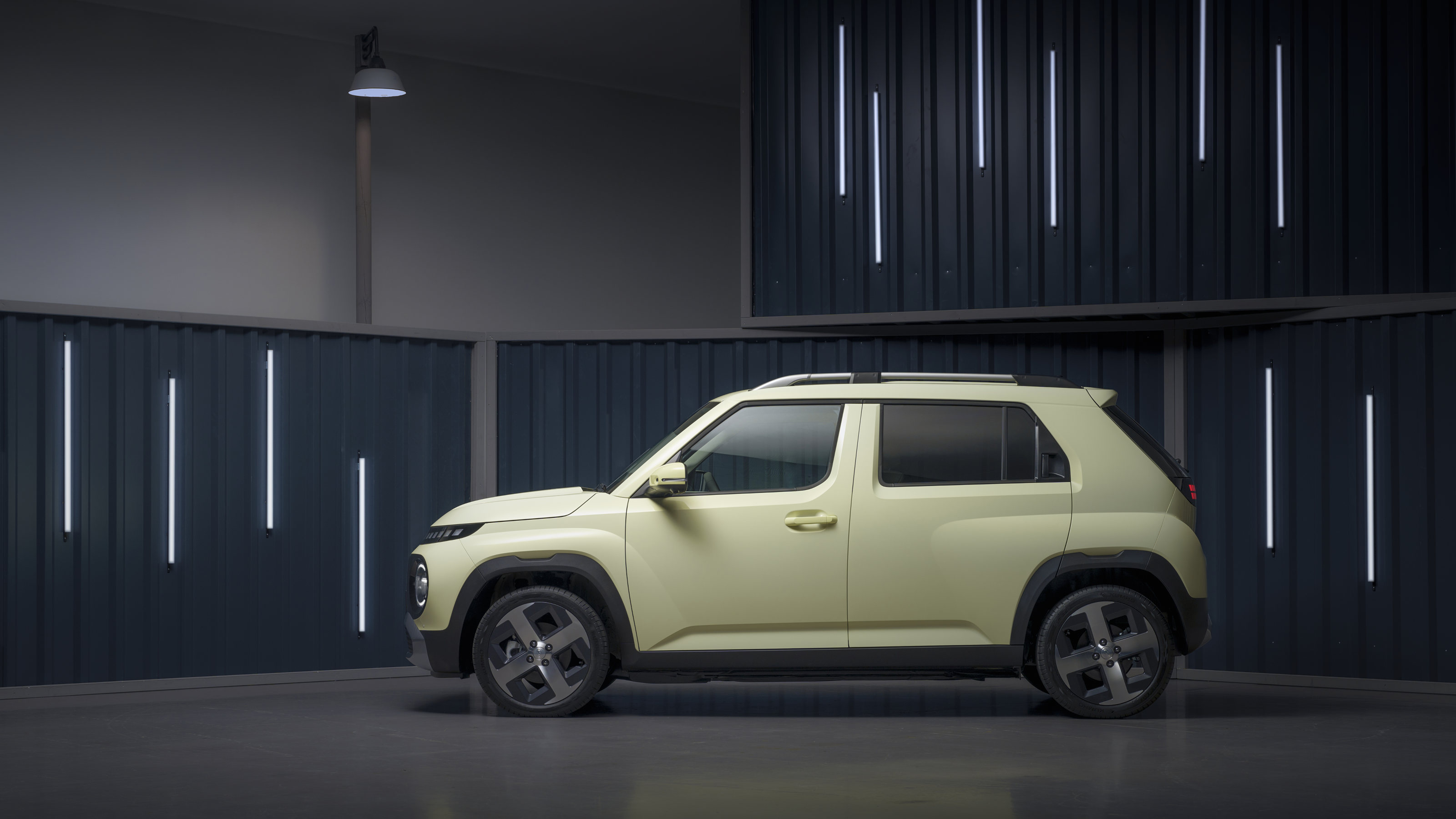
The most recent batch of compact EVs have all but banished the inbuilt range anxiety that used to be the downside of downscaling. Volvo’s EX30, the MINI Electric, and Renault 5 E-Tech have all broken the crucial 200 mile barrier. The next big obstacle is price, with customers ever more attuned to the electric premium and (possibly) becoming less likely to fork out for upscale design to offset it.
Hyundai would argue that upscale and interesting design is very much within its wheelhouse. With models like the Ioniq 5 and Ioniq 6, and a recent focus on synthwave specials like the Pony concept, the Korean carmaker has proved itself unafraid of taking bold steps when building mass market cars.
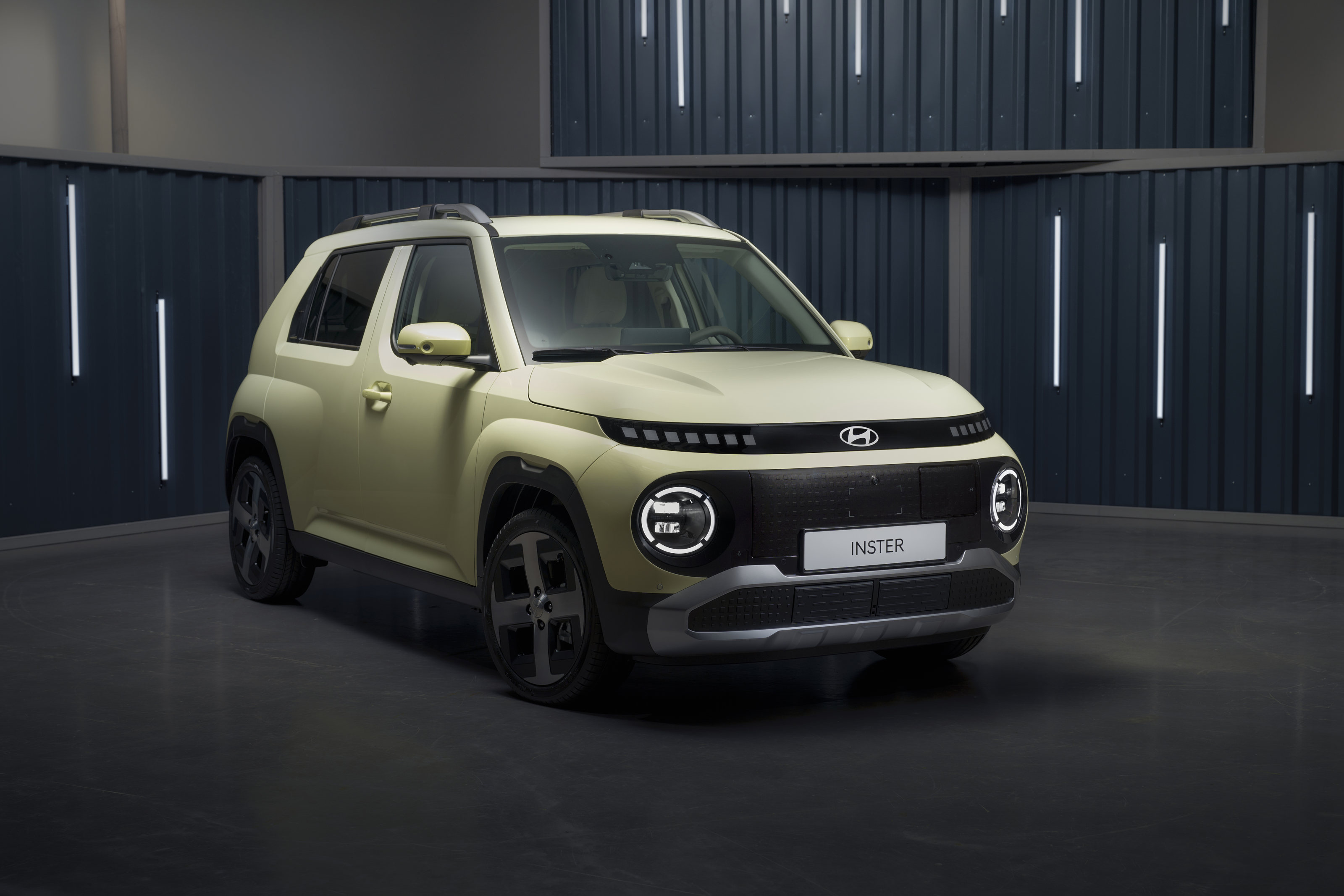
The new Inster is the company’s first foray into the small electric SUV market, a segment that’s likely to dominate the European car market in the next few years. These are cars with a Goldilocks-like blend of attributes – not too big, not too small, not too expensive, not too cheap, etc. – that manage to cater to the biggest slice of the piece. Inster is therefore an essential model for a company that wants to keep itself near the top of the sales charts.
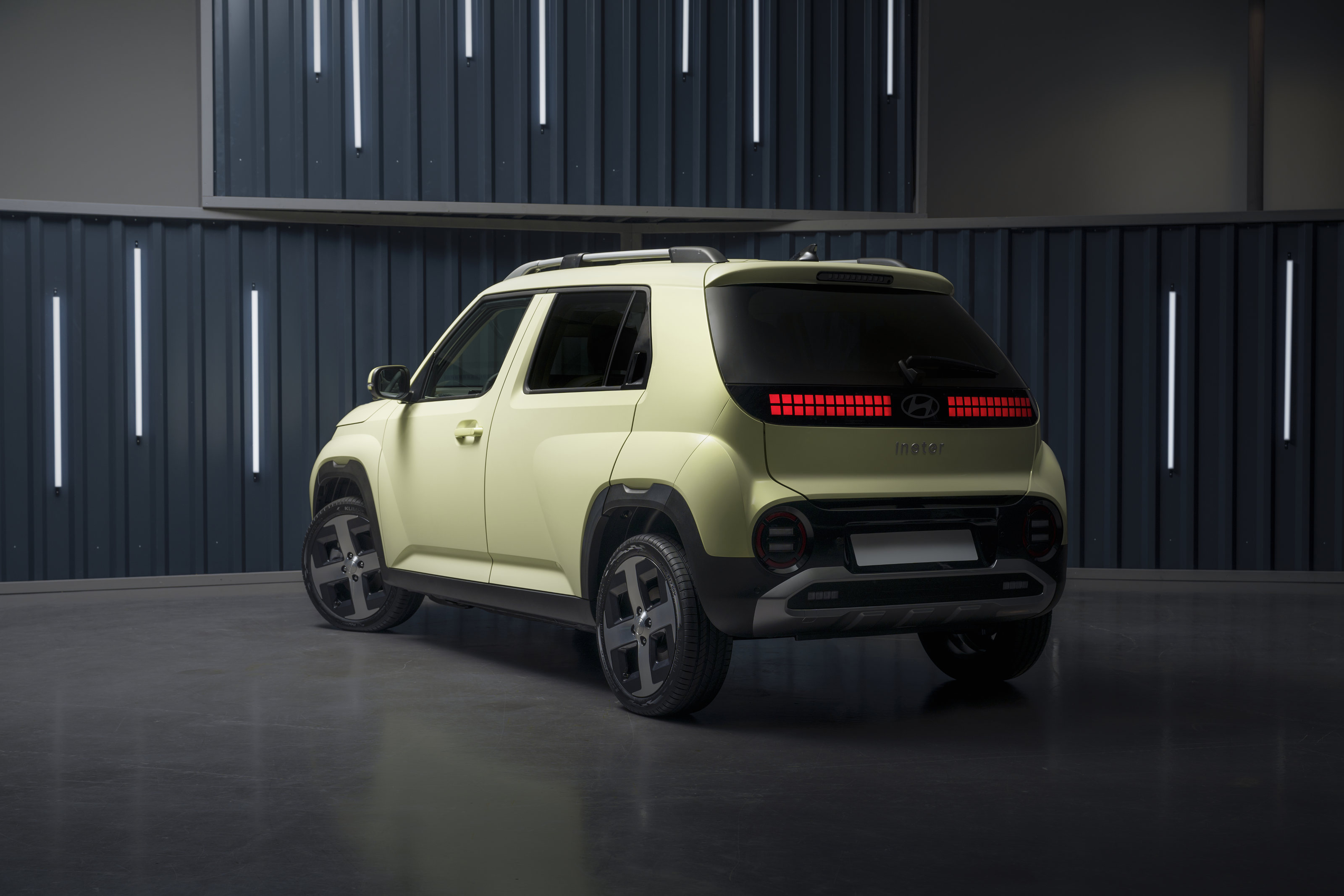
First up, Hyundai promises up to 239 miles of range, a decent amount to eke out of a 49kWh battery. The entry level model, however, has only 42kWh of battery but the company still claims this’ll get you over the magic 200 mile mark. There are a host of clever range-boosting technologies on display, like a battery heating system that ensures the unit is also functioning at peak efficiency.
Assuming that these stats suit your daily use case, there’s a lot to admire about the new arrival. Offered in two different trim levels (01 and 02), the 3.8m-long Inster scores highly with design innovation inside and out. There’s the ‘pixel style’ lighting at the rear and pixel graphics on the front bumper, linking it to the Ioniq cars, and the overall stance is upright and playful. It’s something out of a Pixar film, perhaps, with lights that give off a bold but friendly personality.
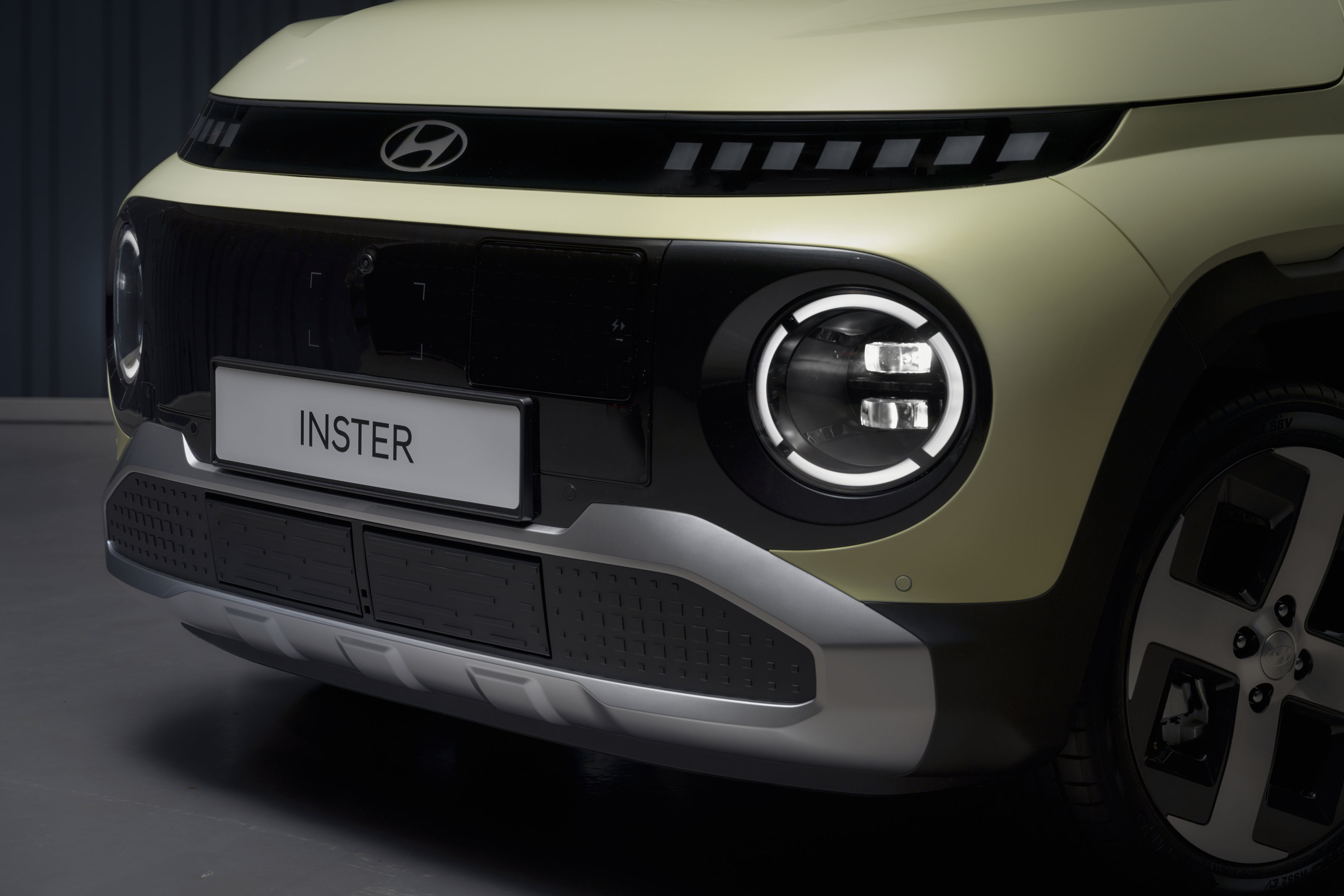
The neat touches continue through to the interior, which carries some of the idiosyncratic asymmetry one used to find in 70s and 80s-era Fiats. Sure, there are a couple of standard digital screens, both for dials and infotainment, but the centre console (with plenty of buttons, Volvo take note) has strong zoomorphic tendencies, depending on the angle you look at it. The whole interior converts to a flat bed (something Japanese microcars have been doing for decades) and handy touches like onboard bi-directional power for charging laptops and e-bikes adds another layer of function.
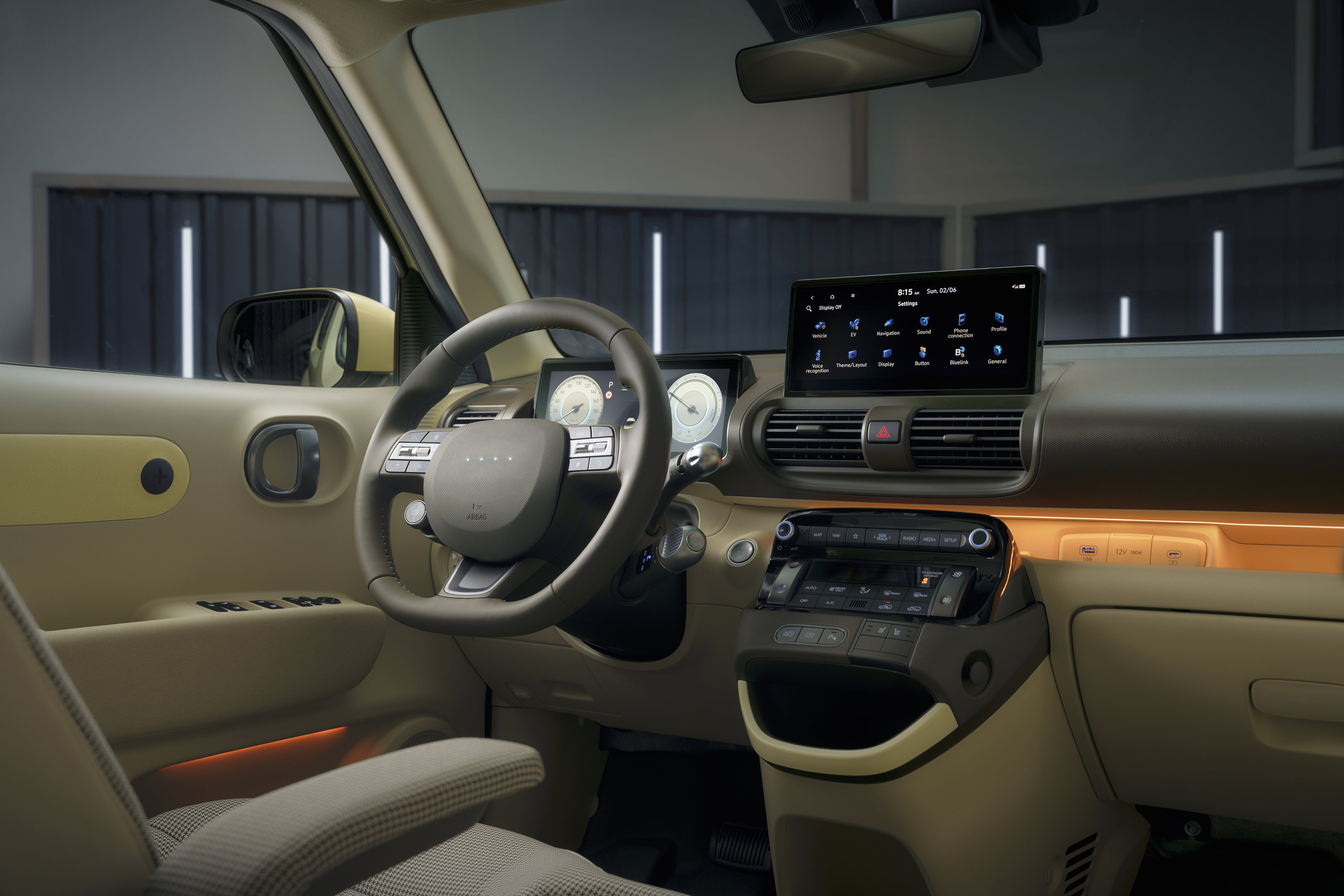
Acronym collectors will be delighted to find the Advanced Driver Assistance System (ADAS) furnishes one with SVW, PCA-R, BVM, FCA, LKA, LFA, BCA, RCCA, SEW, SCC, HAD, DAW, HBA, LVDA, PDW, RVM and ROA. Good luck working out what all that means – all you need to know is that there are plenty of active and passive safety systems baked in, far more than you’ll usually find in this segment.
The Inster’s colour spectrum is similarly lengthy but slightly more creative: choose from Natural Ivory, Atlas White, Jungle Khaki, Sienna Orange, Buttercream Yellow, Abyss Black, Bijarim Khaki, Dusk Blue and Aero Silver. Two-tone exterior paint is also available. Interior is cloth, with no leather option. Vivid, stylish and positively stuffed with technology, we’re looking forward to getting into the Inster and experiencing Hyundai’s newest arrival.
Hyundai Inster, from £23,495, Hyundai.co.uk







